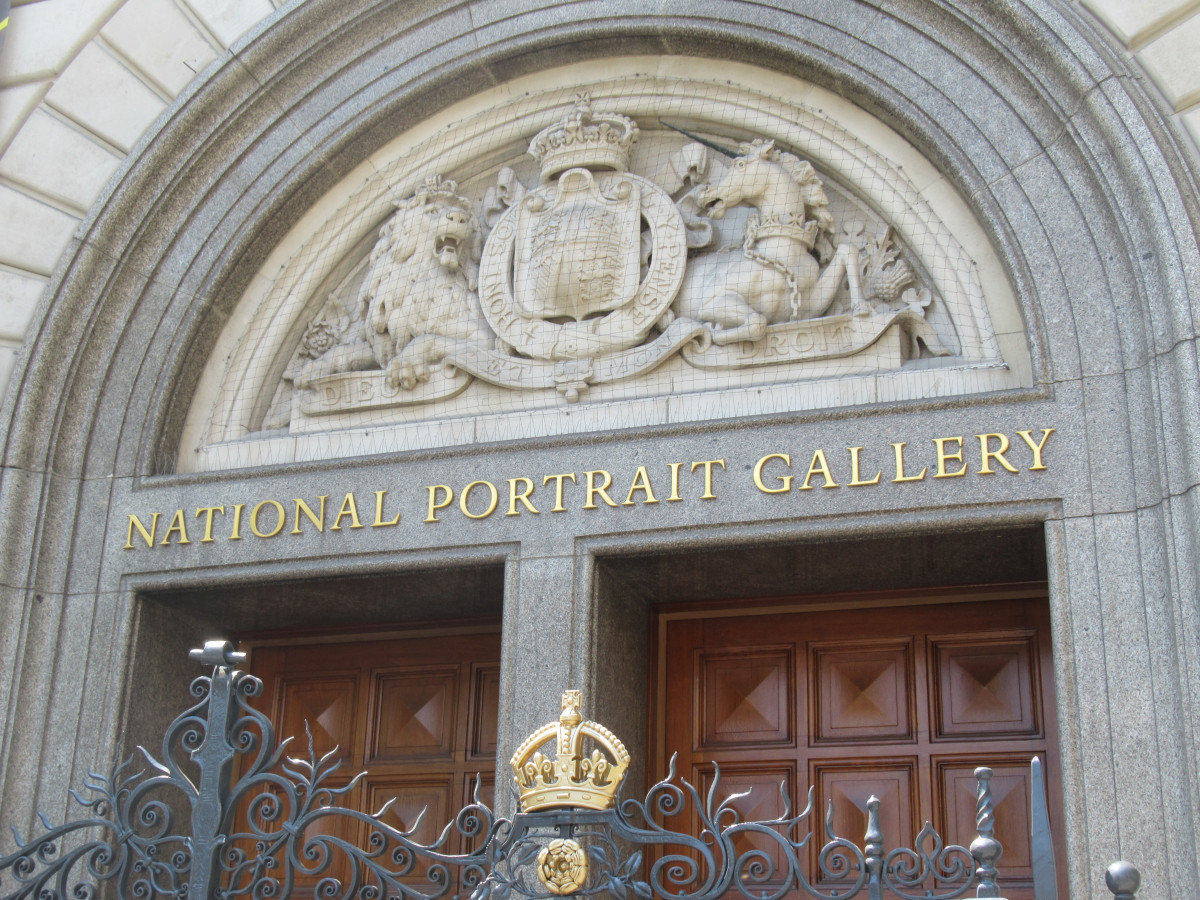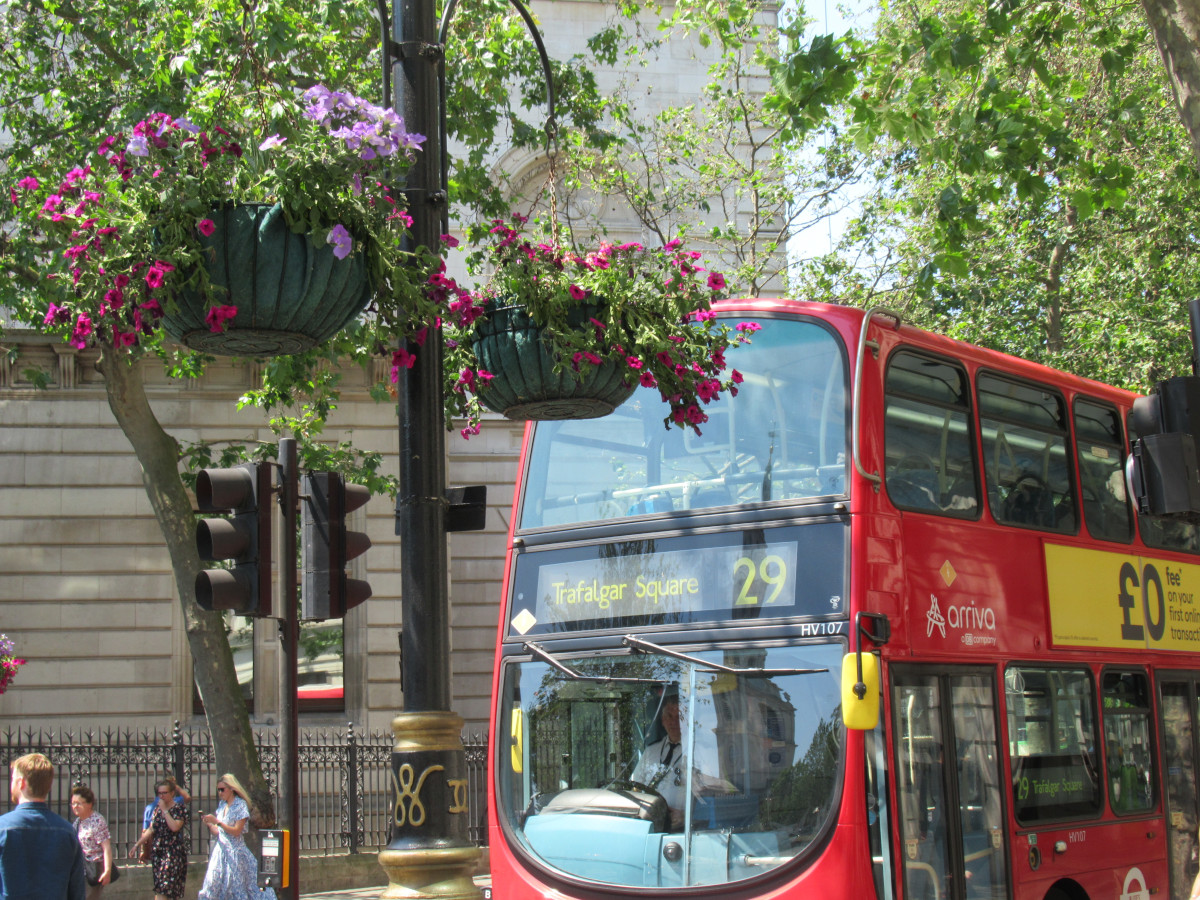Whitehall and Trafalgar Square are quintessential ‘central London’. This post takes you first on a10 minute wander, from Parliament Square to Trafalgar Square, in which you’ll pass loads of famous statues and well-known addresses (Downing Street, anyone?), Then we describe 4 places where you could decide to pause. First, the Churchill War Rooms, the underground maze from which Churchill directed operations in World War 2, then the Banqueting House, scene of the only beheading of an English king, and two big art galleries: the National Gallery and the National Portrait Gallery. This is real day-out territory, except that one day won’t be long enough to do it all!
whitehall



First, in Parliament Square, admire the beauty of the Houses of Parliament and Westminster Abbey and stroll past 12 iconic statues, including Abraham Lincoln, Mahatma Gandhi and Sir Winston Churchill. Finally, in 2018, they added the first woman, the suffragette Millicent Fawcett. Wander down Whitehall, named after the royal palace where Henry VIII held court, which burned down in 1698. You’ll pass imposing buildings like the Foreign Office and the Treasury and see the cenotaph, the war memorial described in the previous episode, in the middle of the road. Then, on your left, is Downing Street, where the Prime Minister lives at no 10. You’ll spot the little crowd outside the gates which close the road off!
Also on your left is Horse Guards Arch, where two soldiers in full regalia – red coats, shiny armour, plumed helmets – sit on horseback at the entrance to Horse Guards Parade. It’s a top-notch photo opportunity, but remember to keep your distance. A helpful notice reads ‘Beware! Horses may kick or bite!’ Just behind them are the official entrances to St James Palace and Buckingham Palace. This is also Changing of the Guards territory, and the ceremony takes place every morning at 11.00 (10.00 on Sundays). On the right-hand side of Whitehall you’ll pass the Banqueting House, the only part of the Palace of Whitehall to survive the fire in the 17th century. Whitehall leads into Trafalgar Square.
trafalgar square



The 50 metre high statue of Nelson recalls his victory at the Battle of Trafalgar. He is guarded by 4 lions made from melted down French canons and surrounded by bronze reliefs of his most famous battle victories. There are 4 plinths, 3 of which are occupied by statues, that is two generals and George IV. The fourth plinth currently hosts a rotating selection of exhibits of varying quality – there’s more on this on the podcast. Trafalgar Square is hectic, often hosting outdoor events, but feels very ‘central London’, with its fountains, buskers, souvenir kiosks and red buses. At Christmas you can admire the huge Christmas tree sent to Britain as a gift from Norway every year since 1947.
Things to spot around the square include the National Gallery and the church of St Martin in the Fields, the parish church to Buckingham Palace (!) which runs a well-used café in its crypt and stages concerts, often free at lunchtimes. Admirality Arch, on the south-western corner, leads through to the Mall and Buckingham Palace, a route you may recognise from televised ceremonial processions. Just up the Strand on the right is Charing Cross, where there’s a beautiful Eleanor Cross, erected by Edward I in the 13th century in memory of his wife. Don’t miss the statue of Charles I, gazing down Whitehall, past the site of his execution. There’s more on the podcast on these monuments.
Distances from central London are all calculated to Charing Cross, of which Samuel Johnson wrote ‘I think the full tide of human existence is at Charing Cross.’ And today, if you stand in nearby Trafalgar Square, you will surely feel that you are in the very heart of London. Here are 4 ideas for places to visit from Trafalgar Square.



the churchill war rooms
‘This is the room from which I will direct the war’ said Winston Churchill in 1940 of this underground World War II operations hub. You can visit the map room where Churchill and his 3 chiefs of staff received the latest intelligence and plotted their response with coloured pins, the Transatlantic Telephone Room, where he kept in touch with President Roosevelt and the tiny bedroom where he slept on a camp bed. In Life of London, Boris Johnson writes ‘I can almost sense him, padding around in the corridors in one of his red boiler suits, calling for a secretary or for a 50 cl bottle of Pol Roger’. The Churchill War Rooms are at the Westminster end of Whitehall.
the banqueting house
This beautiful renaissance building, completed in the 1620s, was the place where Charles I celebrated his marriage to Henrietta Maria, held receptions and audiences and attended masques and balls. But, two decades later, it was the site of his execution. Charles himself had commissioned Rubens to paint the beautiful ceiling, on the theme of ‘wise rulers’, as a tribute to his father. Ironically, it would have been the last work of art he saw as he waited to go through the first-floor window onto the scaffold erected for his execution. Today the building is often used for private receptions, but guided tours are available on certain dates, when you can see inside and hear the history.
The execution of King Charles I took place on January 30th, 1649. A huge crowd had gathered to see the scaffold, placed on a platform hung with black drapes, to witness the first and only execution of an English monarch. The king was brought out through a first-floor window, allowed a brief moment for prayer and then killed by a single blow of the executioner’s axe. An eye-witness described the shock which suddenly went through the watching crowd: ‘There was such a groan by the thousands then present as I never heard before and desire I may never hear again’.
the national gallery



The gallery’s 2300 paintings are displayed in 4 main sections: 1250-1500 (including works by Botticelli and Leonardo da Vinci), 1600-1700 (including Rubens, Vermeer, Caravaggio and Velasquez), 1700- 1800 (including Turner, Constable and Canaletto) and the 19th century (including Monet, Van Gogh, Seurat, Degas and Cezanne) Visiting this gallery, explains the website usaartnews.com, ‘can be compared to taking a course in art history. Here you can see the best artists in the world, represented by the best of their works.’ And the best news? Unlike so many galleries, worldwide and elsewhere in the UK, entry is free.
Visiting the National Gallery can certainly be overwhelming, but there are tricks to make it less so. As entry is free, you can think in terms of ‘popping in’ and seeing a section or two, and maybe returning another day. There are useful guided tours -also free! – and themed audio guided tours, including some for children. You can also explore the collection online. There is much more detail on the podcast, including a selection of works to look out for, recommended by a variety of commentators.
the national portrait gallery



The National Portrait Gallery was the first of its type opened anywhere in the world, (in 1852) and it still has the world’s largest collection of portraits. The works held here are important largely for their subject matter, aiming to be a record of all those who have been important in Britain, past or present. The 9000 or so portraits come in a surprising variety of media – drawings, paintings, caricatures, sculptures, photographs, videos. They are displayed in roughly chronological order, starting with the Tudor portraits on the top floor and there are themed rooms, such as an exploration of Britain’s links with slavery, entitled ‘Exploration and Commerce’.
The array is stunning, from Holbein’s iconic portraits of the Tudors to ‘Contemporary Identities’, including, for example, a black and white photo of Marcus Rashford and a brightly coloured digital portrait of the architect Dame Zaha Hadid. Here you will find a painting of Shakespeare, (the gallery’s first ever donation), a likeness of Jane Austen, done in pencil and watercolour by her sister Cassandra, Oliver Cromwell, warts and all (just as he requested), Dickens and the Bronte sisters, Christopher Wren and Horatio Nelson, royalty and politicians and a portrayal of a sleeping David Beckham, filmed in real time. Prepare to be informed … and surprised!
Listen to the POdcast
Reading suggestions
Life of London by Boris Johnson
Memoirs of the Second World War (abridged version) by Winston Churchill
White King The Tragedy of Charles I by Leanda de Lisle
Killers of the King by Charles Spencer
The National Gallery Companion Guide by Erika Langmuir
National Portrait Gallery The Collection by Rab MacGibbon
links for this post
Churchill War Rooms
Guided tours of the Banqueting House
The National Gallery
The National Portrait Gallery
Where to see the Changing of the Guard
St Martin in the Fields
Previous episode The Houses of Parliament
Next episode Buckingham Palace
Last Updated on September 13, 2023 by Marian Jones






